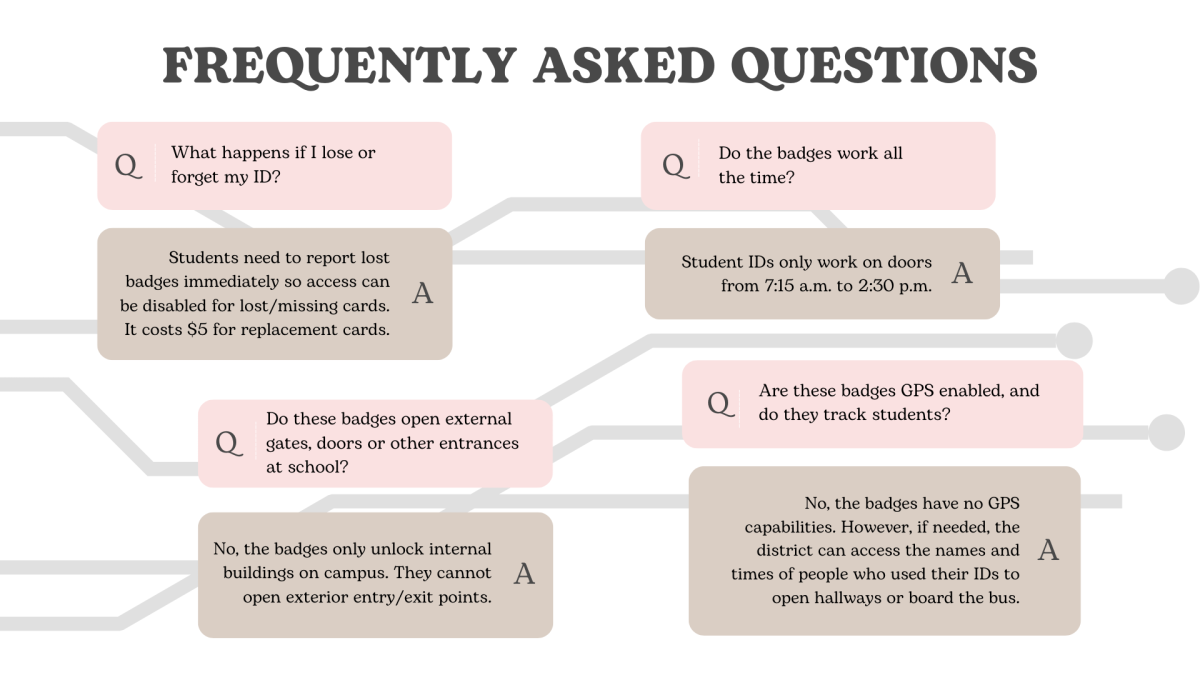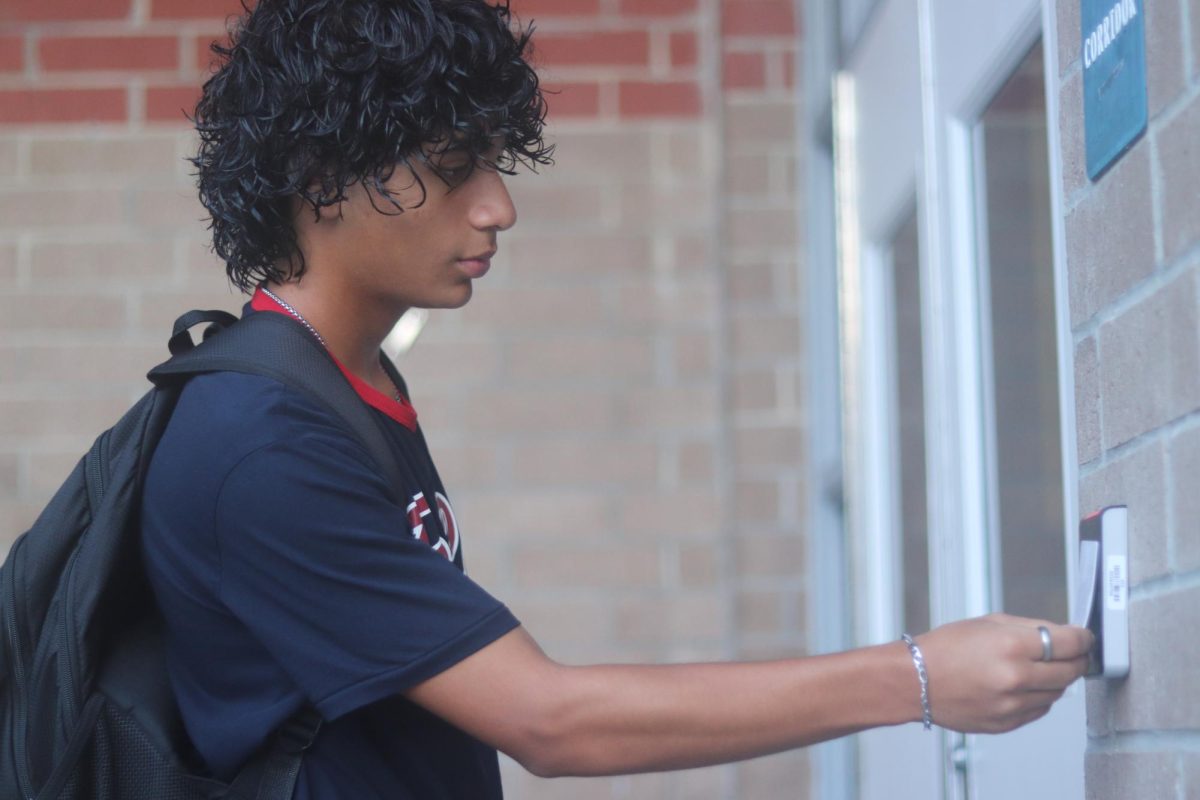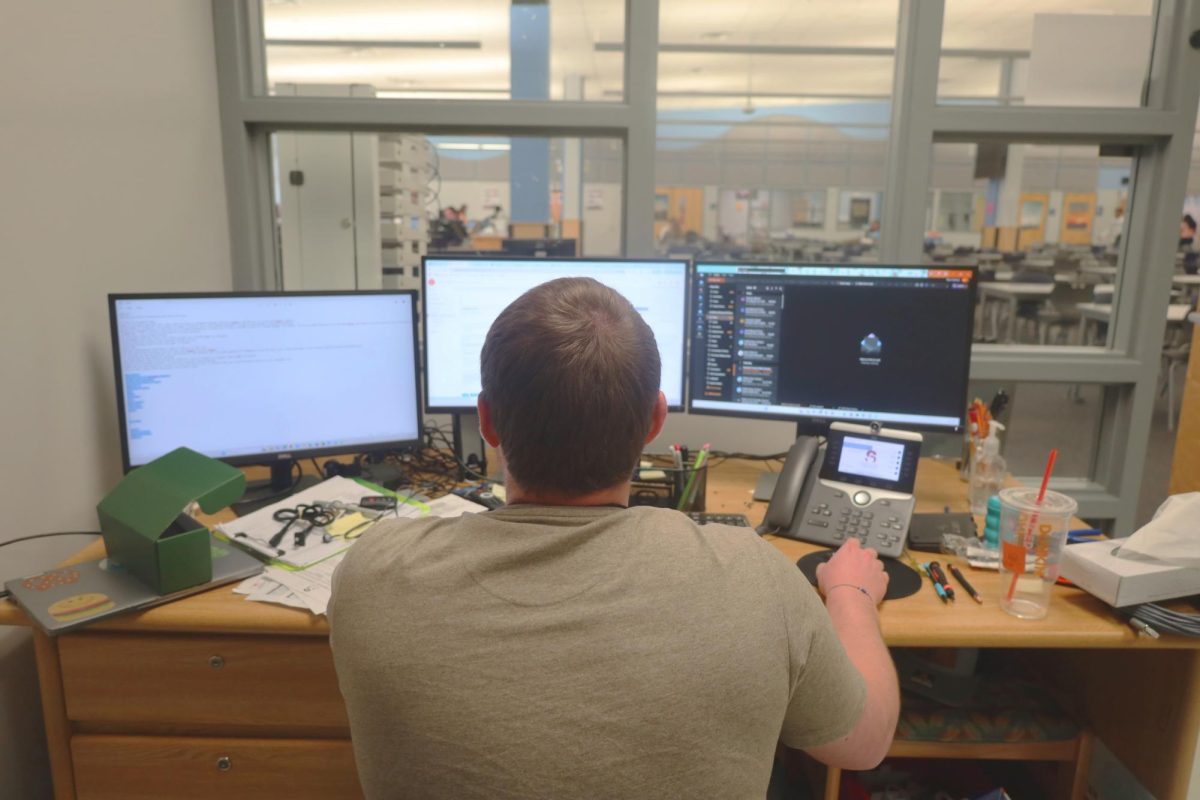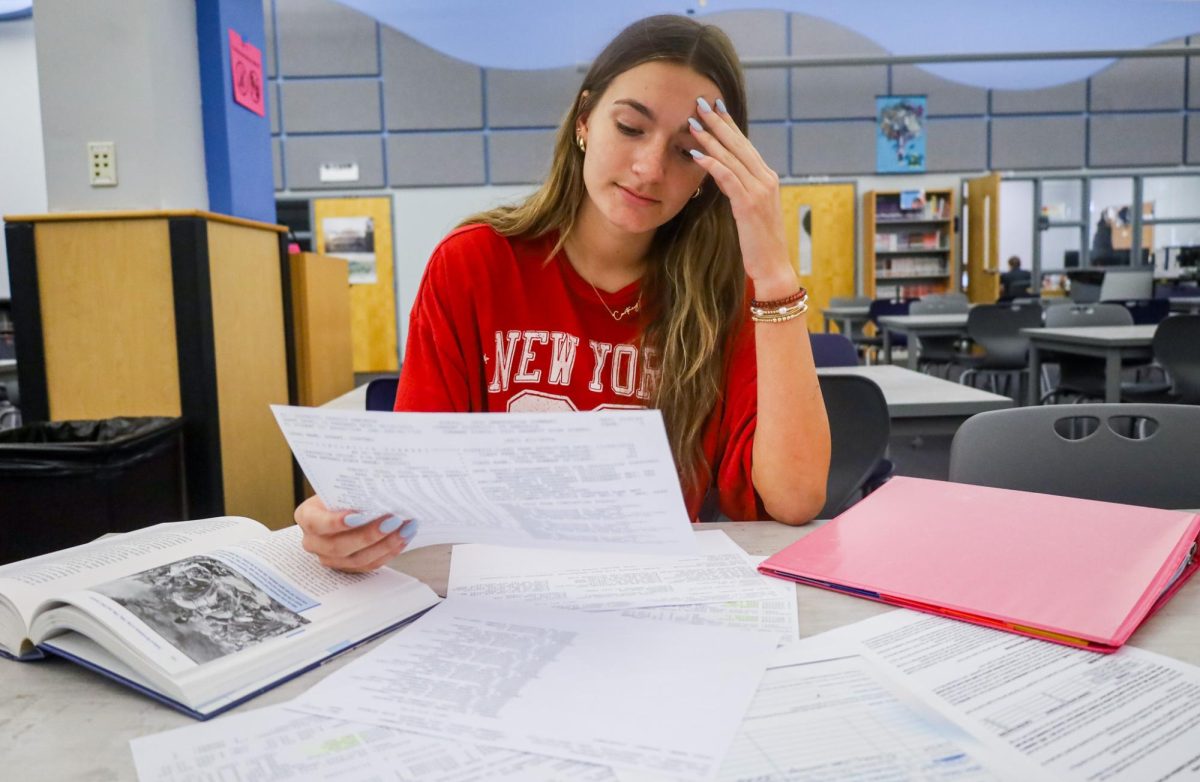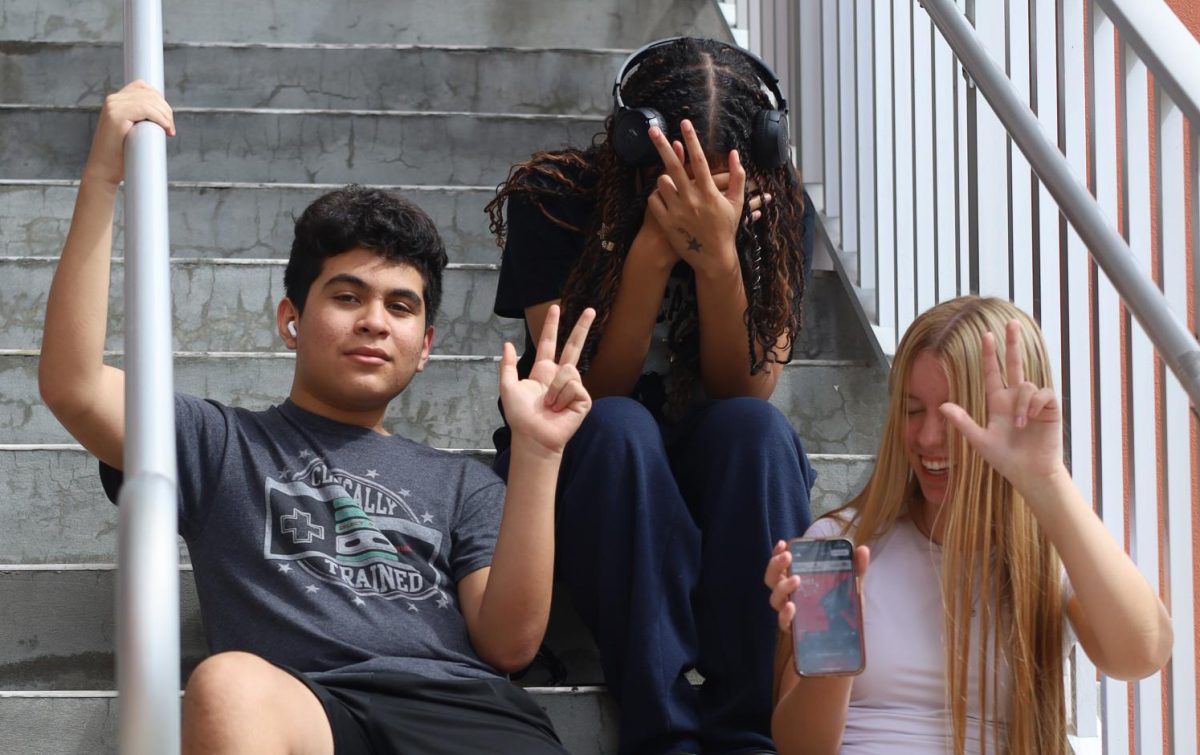Six days before school began, principal Robert Frasca received 1800 student IDs, which would be needed to unlock hallway doors as part of the new year’s safety measures.
One problem, though–he was 600 cards short.
By the first day of school, hundreds of IDs were still missing. In addition, distribution, which occurred during fourth period, became hectic as students changed classes and took periods off.
“The [company that made the IDs] had to pull rosters and IDs so early [that] we didn’t have the Skyward roll over yet,” Frasca said. “Figuring out who didn’t have one, trying to get one into their hands and making sure they were working was the biggest stress for us on the school level.”
These locked hallway doors are just one part of HB1473, a new school safety bill passed in early July. In a unanimous vote, the Florida Senate established stricter perimeter and door safety policies–including a mandate that any propped doors, regardless of the reason, must be reported to the principal and supervising board. Unannounced inspections by the Office of Safe Schools ensure these regulations are being followed.
“It was irritating because the first days are crucial to schedule changes and not everyone has a 4th period,” senior Tracelyn Witsell said. “I don’t dislike the concept of IDs to open hallways, but the way that Hagerty integrated it made me view the system negatively.”
Considering the implementation of the law, policymakers kept the details vague, allowing each county to decide how to deal with the new protocols. Although the lack of details was initially frustrating for school officials, Florida representative Ralph Massullo, co-presenter of the bill, argues that considering Florida’s wide breadth of school systems and needs, a one-size-fits-all system would be impossible.
“We are a free society, and [the bill] just leaves a little latitude to the superintendents and districts to implement what their needs are. An urban area like Hillsborough County will have different needs than a very rural area like Gaston County,” Massullo said.
Out of Seminole County, Hagerty was one of only five schools to receive keypads and ID cards; other schools were forced to secure hallways without any unlocking mechanisms.
“We are very fortunate,” Frasca said. “A lot of schools are still waiting for their [card readers] to be installed, or they’re [still] in the process.”
In total, the school has installed 21 card readers, one for each hallway. Over the summer, Securitas, an outside security company, was contracted to install the hardware. Each reader costs $5000, but funds were covered by the county.
“It was a big undertaking, [which] obviously comes with some fear, anxiety, stress,” Frasca said. “But the company has been fantastic…[it’s] day seven, and everything seems to be flowing pretty normally without any major issues.”
Despite receiving the technological updates first, the short time frame for implementation worried school administration manager Jason Maitland.
“I knew that it would probably be a little bit of a bumpy road to start, just like any new initiative,” Maitland said. “My hope is that [students] are responsible enough to remember their IDs, because obviously it’s going to impact them getting to class on time.”
Three days before school started, Frasca sent out an email explaining the new keypad and ID system. Many students shared the same apprehension as Maitland.
“My initial reaction was, ‘Oh boy, here we go, trying a fancy keypad system [that’s] probably not going to work most of the time,’” sophomore Isla Saint-Jean said.
On the first few days, Saint-Jean’s concerns were extremely prevalent as student IDs failed to unlock hallway doors. Securitas employees had to be called down to campus to activate student IDs and fix card readers.
For School Resource Officer Milton Gil, the system’s initial problems were inevitable, especially since it involved integrating new technology with older building infrastructure.
“Our buildings are a little older now, our doors are older, so the new technology may not work as smoothly as we want, but we’ll identify those issues and fix them and make them better,” Gil said. “My number one thing is to make sure everybody goes home and sleeps in their bed tonight…I’ll take any tools available to me to make sure that I complete my job and my mission every day.”
Although HB1473 was only passed this year, it is actually part of a larger set of bills spearheaded by the Marjory Stoneman Douglas Public Safety Commission. As school shootings continue to become more prevalent every year, even the most reluctant students are forced to acknowledge the bill’s relevance.
“I don’t know if necessary is the right word but I do think [the system] is good for an extra layer of protection against threats,” Saint-Jean said. “[While] it seems impractical sometimes, it’s an extra step that makes it harder for any threat to get to someone, so…it’s good.”
At the state level, Massullo acknowledges that the change will take time getting used to, but the benefits to students are worth the inconvenience.
“The biggest message I think I’d like to send to [students] is that the state cares about them,” Massullo said. “I’d like to say we haven’t had any major issues since Parkland–but that doesn’t mean one can’t happen tomorrow. We just pray that we’re going to catch things early, and when they do happen, hopefully prevent anyone from being harmed.”
After only a week of the ID system, many students are getting used to scanning themselves in and out of hallways, just as administration hoped.
“I was surprised by the new system [at first], and thought that it was going to be a difficult change. However, since students have gotten their IDs I don’t think it is too bad,” junior Melinda Salgado said.
Since this is a permanent system, Gil hopes that it will eventually become second nature to students, with the long-term benefits outweighing the short-term inconveniences. There are still questions in the air–how this system will impact after school activities, what happens when the card readers break down, how next year’s implementation can be improved–but administration will deal with them as they come.
“As time goes on, the negatives will get smaller, but the positive is still going to be there,” Gil said. “Transitions are hard sometimes, but I think this one’s worth it.”
